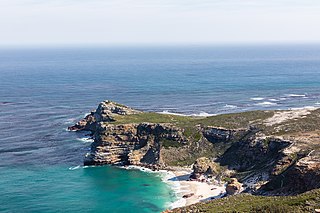Postal orders of the Orange Free State were introduced on 1 January 1898. They came in a range of denominations from 1 Shilling to 1 Pond. The Orange Free State's postal orders were known in Afrikaans as Post Noot (or Postal Note). The Orange Free State postal notes are inscribed in Afrikaans, even though the Orange Free State's name is given in the Dutch spelling - 'ORANJE VRIJ STAAT', which also appears in the watermark.

The Orange Free State was an independent Boer sovereign republic in southern Africa during the second half of the 19th century, which ceased to exist after it was defeated and surrendered to the British Empire at the end of the Second Boer War in 1902. It is the historical precursor to the present-day Free State province. Extending between the Orange and Vaal rivers, its borders were determined by the United Kingdom of Great Britain and Ireland in 1848 when the region was proclaimed as the Orange River Sovereignty, with a seat of a British Resident in Bloemfontein. Bloemfontein and the southern parts of the Sovereignty had previously been settled by Griqua and by Trekboere from the Cape Colony.

Afrikaans is a West Germanic language spoken in South Africa, Namibia and, to a lesser extent, Botswana and Zimbabwe. It evolved from the Dutch vernacular of South Holland spoken by the largely Dutch settlers and the people of colour associated with them in what is now South Africa, where it gradually began to develop distinguishing characteristics in the course of the 18th century. Hence, it is a daughter language of Dutch, and was previously referred to as "Cape Dutch" or "kitchen Dutch". However, it is also variously described as a creole or as a partially creolised language. The term is ultimately derived from Dutch Afrikaans-Hollands meaning "African Dutch".

Dutch(Nederlands ) is a West Germanic language spoken by around 24 million people as a first language and 5 million people as a second language, constituting the majority of people in the Netherlands and Belgium. It is the third-most-widely spoken Germanic language, after its close relatives English and German.
Issued postal orders do not come with counterfoils, as the counterfoils were kept by the post office for recording purposes. Any postal orders that still have a counterfoil attached are remainders from books, which were souvenired during the Second Boer War. These are of interest to collectors of the Postal Orders.

The Second Boer War was fought between the British Empire and two Boer states, the South African Republic and the Orange Free State, over the Empire's influence in South Africa. It is also known variously as the Boer War, Anglo-Boer War, or South African War. Initial Boer attacks were successful, and although British reinforcements later reversed these, the war continued for years with Boer guerrilla warfare, until harsh British counter-measures brought the Boers to terms.
Popularity of the Orange Free State postal notes
The Orange Free State's postal notes are very popular with banknote collectors, and in fact, some denominations are listed in the Pick Specialised Catalogue as banknotes, but it is noted there that the paid postal notes are worth half the listed catalogue value.

A banknote is a type of negotiable promissory note, made by a bank, payable to the bearer on demand. Banknotes were originally issued by commercial banks, which were legally required to redeem the notes for legal tender when presented to the chief cashier of the originating bank. These commercial banknotes only traded at face value in the market served by the issuing bank. Commercial banknotes have primarily been replaced by national banknotes issued by central banks.
The two most common denominations that turn up are the 1/- and the 5/- postal notes. A postal note that has been paid in the Cape of Good Hope has a 1d. red postage stamp stuck to the back and cancelled with the paying post office's datestamp in addition to the datestamp being applied to the correct area on the face of the postal order. These are regarded by collectors of the postal orders of the Commonwealth of Nations as being worth slightly more than the same item paid within the Orange Free State. It also depends on both the place of issue and the place of encashment.
The most difficult of the postal notes to get is the 1 Pond, as there would have been far fewer of the 1 Pond postal notes sold than any other denomination.
The pond was a currency unit issued in the Orange Free State and the South African Republic. It was prepared for, but not issued, in New Griqualand.
Denomination chart
Catalogue number. Denomination. Commissie Loon. Colour.
PS681. 1 Shilling. 1 Penny. Green.
PS682. 1 Shillings and Sixpence. 1 Penny.
PS683. 5 Shillings.
PS684. 7 Shillings and Sixpence.
PS685. 10 Shillings.
PS686. 12 Shillings and Sixpence.
PS687. 15 Shillings.
PS688. 17 Shillings and Sixpence.
PS689. 1 Pond. 3 Pence. Olive-Green.
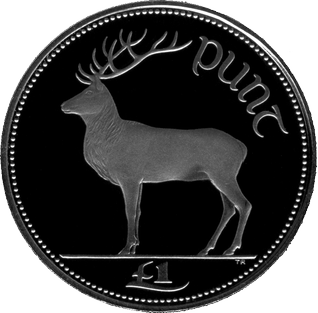
The Irish pound was the currency of Ireland until 2002. Its ISO 4217 code was IEP, and the usual notation was the prefix £. The Irish pound was replaced by the euro on 1 January 1999. Euro currency did not begin circulation until the beginning of 2002.
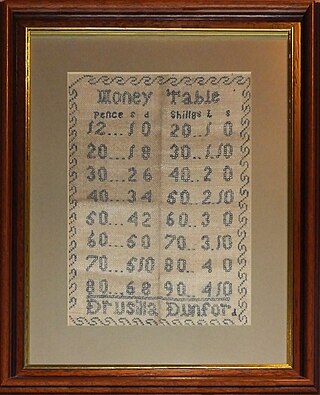
£sd is the popular name for the pre-decimal currencies once common throughout Europe, especially in the British Isles and hence in several countries of the British Empire and subsequently the Commonwealth. The abbreviation originates from the Latin currency denominations librae, solidi, and denarii. In the United Kingdom, which was one of the last to abandon the system, these were referred to as pounds, shillings, and pence.

The Australian pound was the currency of Australia from 1910 until 14 February 1966, when it was replaced by the Australian dollar. As with other £sd currencies, it was subdivided into 20 shillings, each of 12 pence.
The pound is the currency of Guernsey. Since 1921, Guernsey has been in currency union with the United Kingdom and the Guernsey pound is not a separate currency but is a local issue of banknotes and coins denominated in pound sterling, in a similar way to the banknotes issued in Scotland, England and Northern Ireland. It can be exchanged at par with other sterling coinage and notes.
The Jamaican dollar has been the currency of Jamaica since 1969. It is often abbreviated to J$, the J serving to distinguish it from other dollar-denominated currencies. It is divided into 100 cents.

The dollar has been the currency of Barbados since 1935. The present dollar has the ISO 4217 code BBD and is normally abbreviated with the dollar sign "$" or, alternatively, "Bds$" to distinguish it from other dollar-denominated currencies. It is divided into 100 cents.
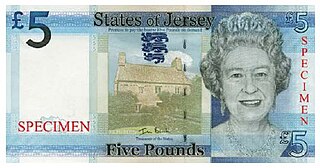
The pound is the currency of Jersey. Jersey is in currency union with the United Kingdom, and the Jersey pound is not a separate currency but is an issue of banknotes and coins by the States of Jersey denominated in pound sterling, in a similar way to the banknotes issued in Scotland and Northern Ireland. It can be exchanged at par with other sterling coinage and notes.

The Somali shilling is the official currency of Somalia. It is subdivided into 100 senti, cents (English) or centesimi (Italian).

The Biafran pound was the currency of the breakaway Republic of Biafra between 1968 and 1970.
The pound was the currency of New Zealand from 1840 until 1967, when it was replaced by the New Zealand dollar.
The pound was the currency of Malawi until 1971. From 1932, Malawi used the Southern Rhodesian pound. In 1955, a new currency was introduced, the Rhodesia and Nyasaland pound. This was replaced by the Malawian pound in 1964, following Malawi's independence. The pound was subdivided into 20 shillings, each of 12 pence. The pound was replaced by the decimal kwacha in 1971, at a rate of 2 kwacha = 1 pound.
The Gambian pound was the currency of the Gambia between 1965 and 1971. Gambia used the British West African pound until it issued its own currency on October 5, 1964. In 1971, the dalasi replaced the pound at a rate of 1 pound = 5 dalasis which means 1 dalasi = 4 shillings. One Gambian pound was made up of 20 shillings, each shilling being made up of 12 pence.

The pound was the currency of the Union of South Africa from the creation of the country as a British Dominion in 1910. It was replaced by the rand in 1961, the same year that South Africa became a republic.
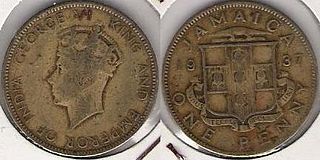
The Jamaican pound was the official currency of Jamaica between 1840 and 1969. It circulated as a mixture of British currency and local issues and was always equal to the British pound. The Jamaican pound was also used by the Cayman Islands and Turks and Caicos Islands.
The pound was the currency of the Federation of Rhodesia and Nyasaland. It was subdivided into 20 shillings, each of 12 pence.
The pound was the currency of Southern Rhodesia. It also circulated in Northern Rhodesia and Nyasaland. The pound was subdivided into 20 shillings, each of 12 pence.
The South African Republic's postal orders were introduced on 1 January 1898, which was also the date that the South African Postal Union Convention came into effect.
The New Guinean pound was the currency of the Australian Territory of New Guinea between 1915 and 1966, and replaced the New Guinean mark when Australia occupied the former German colony at the end of World War I. The New Guinean pound was subdivided into 20 shillings, each of 12 pence, and was equal to the Australian pound. The Australian currency circulated alongside coins issued specifically for New Guinea between 1929 and 1945. New Guinea coins ceased to be produced in 1945, and production of Papua New Guinea resumed in the 1970s.
This page is based on this
Wikipedia article Text is available under the
CC BY-SA 4.0 license; additional terms may apply.
Images, videos and audio are available under their respective licenses.





